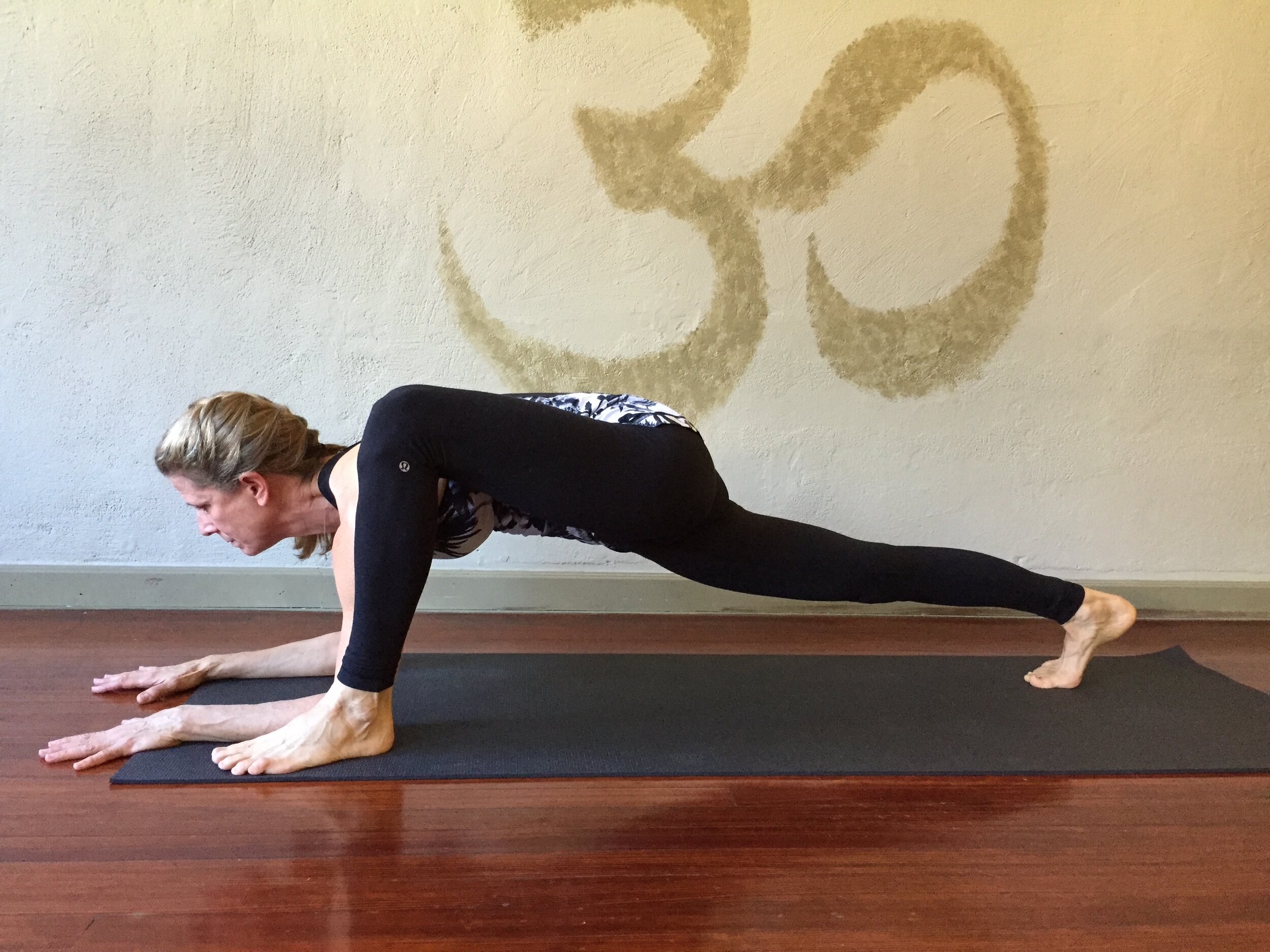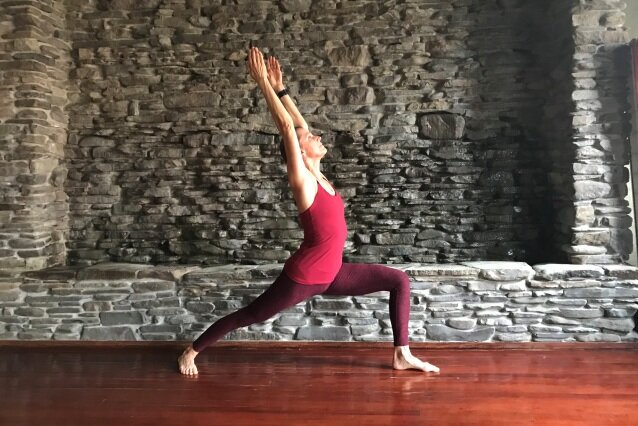Hanuman was the name of a powerful monkey chief of extraordinary strength and prowess. In the Ramayana, a tale of the adventures of Lord Rama, Hanuman plays an important role in saving Rama’s wife, Sita, as well as Rama’s brother, Lakshmana. Hanuman does this by taking two giant leaps; one is from the southern tip of India across the ocean to the island of Sri Lanka in order to save Sita and the other is from the southern tip of India to the northern Himalayas to find and bring back a special herb that grows there. This herb is needed to save Lakshmana who was mortally wounded in battle. It is Hanuman’s undying devotion to Lord Rama that enabled to do these amazing feats and it is this aspect of devotion to practice that we need to achieve this posture.
Another meaning of the word Hanumana means, “having a broken jaw”. As a mischievous monkey, Hanuman once thought the sun was a ripe mango and he jumped up to try and steal it. Indra, the lord of heaven, struck Hanuman down with a thunderbolt, which broke his jaw. The broken jaw can represent several things. One of them is imperfection. In Hindu mythology there is often a sense of imperfection in the stories because that’s a true reflection of how life is. The stories never end with “and they lived happily ever after” If Hanuman was perfect, then there isn’t any real juicy story to sink your teeth into, there is no lesson to be learned, no obstacle to overcome, it is his brokenness or his imperfection that invites discussion. It is his brokenness that reminds us of our own imperfection. Hanuman makes great leaps despite his apparent brokenness. Can we? Are we satisfied with a less than perfect Hanumanasana? Are we dissatisfied with tight hamstrings or quadriceps? Do we have the undying devotion that Hanuman displays for Rama to continue to work on our splits?
If you don’t like doing a full split because it just feels too intense, or you are too far away from the floor and you feel unstable and worried about tipping over and tearing something (a legitimate concern!) there are some modifications that can help you get there by reducing the discomfort of the full pose. Which one of these poses do you like doing? Is there one in this family of poses that is a little more accessible to you? Is there one that you would practice more frequently? You may see some or all of these poses in class as these poses are the most common warm up poses we use for Hanumanasana.
Here is a list of some of the precursors to Hanumanasana:
Supta Padangusthasana or Hand to Big Toes Pose
Lizard Lunge
Anjaneyasana
Warrior I
Lunge thigh stretch
Wheel (or Bridge) with one leg lifted
Hanumanasana, almost there!











